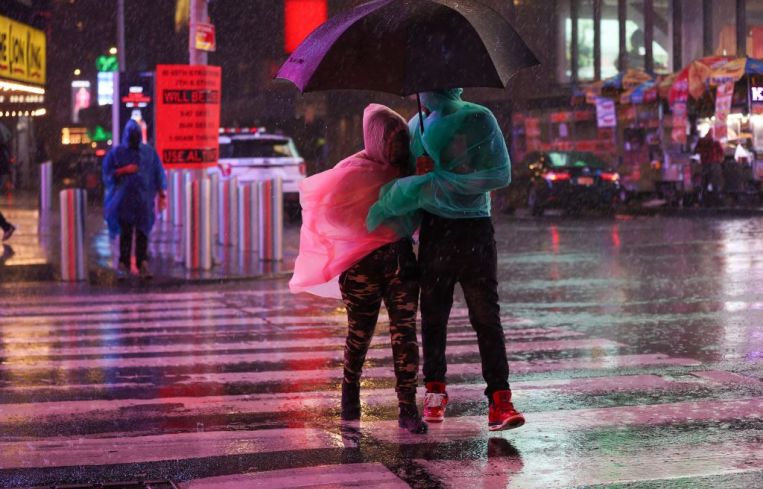New Bill Would Require NYC to Develop Climate Change Plan Every Decade
By Celia Young October 8, 2021 5:47 pm
reprints
The New York City Council passed a bill that requires the city to develop a plan for climate change every 10 years on Thursday, after Hurricane Ida caused billions in damages.
The legislation requires the mayor’s Office of Long-Term Planning and Sustainability to develop a five-borough plan to address climate hazards impacting New York City — with the first due for public release by Sept. 30, 2022.
The bill, introduced in 2019 by Brooklyn Council member Justin Brannan, has 41 council member sponsors and was approved almost unanimously. Its next stop is Mayor Bill de Blasio’s desk for final approval, which he’s expected to give.
“This plan is the epitome of ‘long overdue,’” Brannan, who chairs the Committee on Resiliency and Waterfronts, said in a statement. “New York City has never before put together a comprehensive plan to protect all New Yorkers from the inevitable effects of climate change. The climate crisis is here and we can no longer treat it as some abstract future. In passing this bill we promise to take our new reality seriously.”
Hurricane Ida, which hit shortly after Hurricane Henri, battered New York City’s more than 500 miles of shoreline, prompting President Joseph Biden to declare a state of emergency after the storm killed at least 16 people and caused billions in damage. As flash flood emergency warnings hit city-dwellers’ phones — the first ever issued by the National Weather Service’s New York City outpost — record-breaking flooding, winds and power outages hit the city’s buildings and subway lines.
Ida alone caused somewhere between $16 billion and $24 billion in damages to the northeast, risk analysis firm CoreLogic found. The cost in New York City alone could extend well into the billions, Jay Martin, executive director of the Community Housing Improvement Program, said on Twitter at the time.
Ida hit New York nearly 10 years after Superstorm Sandy tore through the city’s shorelines, turning some neighborhoods into a war zone in its aftermath. All told, Sandy claimed the lives of 44 people and caused an estimated $19 billion in damages.
With hurricane season running through Nov. 31, the potential for damage only grows as climate change makes tropical storms and hurricanes more deadly.
“Climate change isn’t coming; it’s been here for a while,” Carlo Scissura, president and CEO of the New York Building Congress, told Commercial Observer. “We need to finally accept it [and] build toward a resilient future.”
If de Blasio signs the bill, it would require a climate plan to evaluate weather events including extreme storms, sea-level rise, tidal flooding, wildfire, flooding surge associated with a storm along with extreme heat, precipitation and wind.
It would also have to produce recommendations on ways to protect residents, property and city infrastructure. The Office of Long-Term Planning and Sustainability would identify areas that are highly vulnerable to climate hazards to plan protective measures, and consider the potential impact on environmental justice.
Scissura told CO that he hopes that plan will look at communities on an individual level and address the threats they specifically face from climate change. Building infrastructure that can withstand severe storms will look different whether it’s in Bay Ridge, Brooklyn, Lower Manhattan or the Coney Island section of Brooklyn.
“Every community has a different need,” Scissura said. “It’s not one size fits all.”
While New York is behind on addressing climate change, Scissura sees now as the time to act, especially as a trillion-dollar spending bill works its way through the federal government — one that includes funds to fight climate change. The bill originally intended only to focus on shoreline communities to limit flooding and damage to properties in flood zones, but Brannan extended it to include the entire city’s climate plans in one basket, the Gotham Gazette reported.
The city’s other climate initiatives date as far back as Mayor Michael Bloomberg, who in 2007 released a strategic plan including climate resiliency. De Blasio’s “OneNYC” strategy envisioned how the city would prepare for the future, including climate change, through 2050, the Gotham Gazette reported.
Celia Young can be reached at cyoung@commercialobserver.com.


